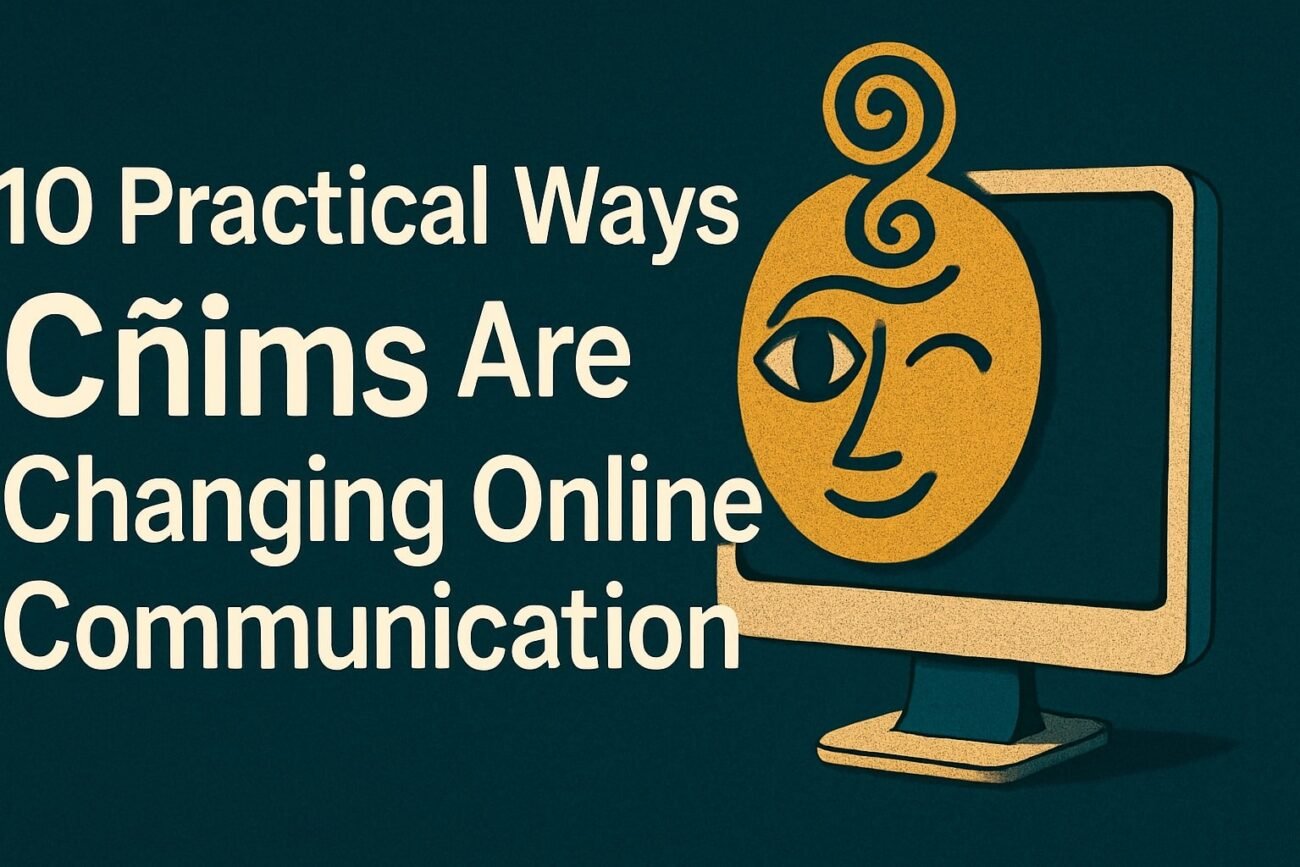Introduction
The term Cñims has recently appeared across online communities, creative networks, and digital think-pieces. More than a passing trend, it represents a new way of sending and receiving meaning in the digital age — one that blends art, language, technology, and psychology.
This guide explores what Cñims are, how they work, and why they may become an important part of future communication.
What Are Cñims?
Cñims are symbolic, multi-layered digital expressions. Unlike standard memes, which often have a fixed joke or reference, a Cñim contains shifting layers of meaning — emotional, cultural, and contextual — that change depending on who views it and in what setting.
A single Cñim might act as:
- A piece of digital art
- A social statement
- A personal identity marker
- A code that only certain communities can interpret
This fluidity makes them adaptable across cultures, languages, and online spaces.
Origins And Cultural Roots
The spelling “Cñims” — with its distinct “ñ” — hints at cross-cultural origins, drawing influence from Spanish orthography and possibly indigenous languages.
Early forms emerged in underground internet forums, experimental art collectives, and metaverse prototypes. Creators used them to combine visual symbolism with subtle, layered storytelling.
Why Cñims Matter In Digital Culture
Cñims address a modern challenge: how to express complexity in a fast, visually driven world.
They offer:
- Context-aware meaning — a Cñim can signal different things in different communities.
- Emotional resonance — visual cues that trigger empathy, nostalgia, or curiosity.
- Cultural bridge-building — a format that adapts to local traditions while staying globally recognizable.
This versatility has made them valuable for artists, educators, marketers, and online communities.
The Role Of Technology
AI Interaction
Artificial intelligence doesn’t just detect Cñims — it learns from them. AI models can be trained on Cñims to better understand:
- Irony and satire
- Symbolic storytelling
- Emotion in visual media
However, this raises ethical questions: If AI can mimic emotional nuance, how do we safeguard authenticity in human communication?
Digital Platforms
Cñims now appear in:
- Social media filters and augmented-reality effects
- NFT art collections
- Interactive metaverse spaces
- Branding campaigns with hidden visual codes
Psychological And Social Impact
Cñims can tap into deep psychological responses. Neuroscience suggests that symbolic imagery can activate mirror neurons, leading to shared emotional states between people.
They also give users a safe space for identity exploration — allowing them to adopt avatars, symbols, or coded messages without direct exposure.
Applications Across Sectors
Art And Design
Artists embed Cñims into paintings, animations, and virtual installations, using them like modern hieroglyphics to tell layered stories.
Marketing And Branding
Forward-thinking brands use Cñim-inspired visuals to:
- Create mystery and exclusivity
- Reward loyal customers with hidden meanings
- Build community engagement through visual puzzles
Education
Gamified learning platforms integrate Cñims as visual learning triggers — helping students link abstract ideas to memorable symbols.
Workplace Communication
In remote teams, Cñim-style visuals act as quick emotional signals — communicating mood or urgency faster than text.
Cross-Cultural Adaptation
Cñims shift shape depending on region and culture.
- In Japan, they borrow from kaomoji and minimal graphic design.
- In Latin America, they blend with the visual storytelling of magical realism.
- In online gaming, they take the form of skins, emblems, and clan symbols.
This adaptability keeps Cñims relevant in multiple contexts.
Future Outlook
Experts predict that Cñims could evolve into:
- A new digital dialect — blending visual, textual, and symbolic meaning.
- A currency of cultural exchange — traded as NFTs, collectibles, or in-game assets.
- An interface for human-AI interaction — where AI assistants use symbolic “shortcuts” to convey complex states.
The biggest challenge will be balancing openness and privacy — ensuring that Cñims remain tools for connection, not manipulation.
Conclusion
Cñims are not just another digital trend. They represent a flexible, culturally aware, and emotionally intelligent form of communication that fits the complexity of our online and offline lives.
Whether used in art, education, branding, or personal identity, they offer a glimpse into how humans may interact in the coming decades — blending creativity, technology, and human emotion into one evolving language.
FAQ’s:
Are Cñims The Same As Memes?
No. While memes often have a fixed joke or cultural reference, Cñims are layered symbols that can change meaning depending on context and audience.
Where Did Cñims Originate?
They first appeared in underground online communities, digital art collectives, and early metaverse experiments. The name suggests cross-cultural influences.
How Are Cñims Used In The Real World?
They appear in art, social media, branding, education, and even workplace communication as a way to convey complex ideas quickly.
Can Anyone Create A Cñim?
Yes. Like digital art, anyone can design one, but meaningful Cñims often carry cultural, emotional, or symbolic weight.
Do Cñims Have One Universal Meaning?
No. Their meaning is context-dependent. A single Cñim may hold different interpretations in different communities.
Hungry for more? Head over to my website for fresh articles.
